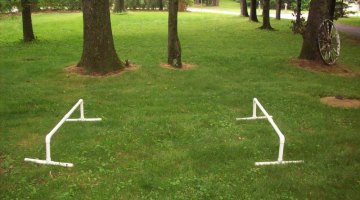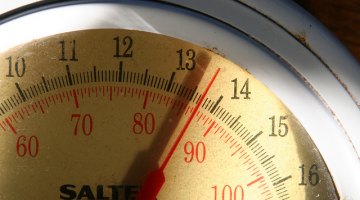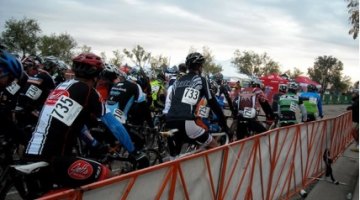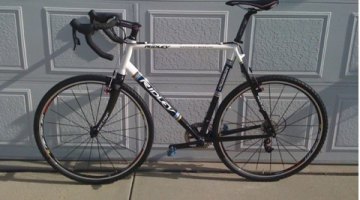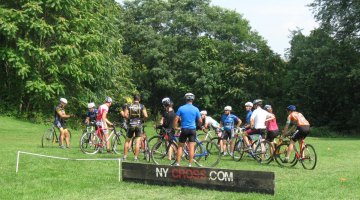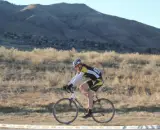
Although this is a race, like so many others, I had some alone time on my own personal cyclocross adventure. At least the course is scenic. Courtesy of Josh Schwiesow
By now, you’ve probably read about our newest noob columnist, Josh. Why cyclocross and why now? Well, don’t ask us, just check out his first column. But in Josh’s timeline, now that he’s found his new bike, he’s looking at how the first season of racing went, in order to see what needs to be done for this year.
by Josh Schwiesow
Before getting into all of the promised items in terms of training, diet, skills, et cetera, I thought it would be worthwhile to do the opposite and reflect on some mistakes, or what I’ll call “learning opportunities” from my first season of cyclocross racing. In my first season, I did approximately 11 races, and I also participated in two clinics.
First Clinic
Before my first race, the Ridley had plenty of miles on it. In the span of two weeks, it actually saw a pair of century rides, both with my wife. My wife being something of a newer cyclist had set a goal of completing a century ride, and she actually did two: one in Texas and one in Boulder. Riding with her gave me the opportunity to put some miles on the Ridley and get used to the SRAM double-tap shifting.
I even got a few off-road miles on the new bike, as a result of noticing a call for cyclists to help “ride in” our new course in Golden, Colorado, courtesy of Cyclocross Magazine’s own Lee Waldman. I headed out there with my wife on her mountain bike and decided to try out the course. In absolutely no time at all, we had flatted three of our four tires. I sent off an email to Lee, who must have been laughing, and insisted that I had to be “off-trail” as he’d been riding tubulars out there all summer long with no issues. After some back-and-forth correspondence with Garmin data, I got it figured out and soon had a regular ride with no issues. Adding some Mr. Tuffy tire liners may have helped as well.
As a result of those century rides, however, I showed up for my first cyclocross clinic with bottle cages on my bike. Before beginning, one of my friends suggested losing them post haste. This was an early “what was I thinking?” moment and I was glad to have arrived early enough to lose them. I knew I’d have to shoulder the bike, but I had no idea how I’d do it with bottle cages.
My next question, though, was hydration. Do I put a bottle in my jersey pocket? Remarkably, on the road and mountain bike, I’m very bad at maintaining hydration, so why I was so concerned for cyclocross, I simply cannot answer. It was a noob concern. My answer was to hydrate beforehand. I will point out that our clinic instructor showed up with one bottle cage on the seat tube and did make a point for us that if we must take a water bottle into a race, to use the seat-tube bottle bosses so as to not interfere with shouldering. So, for those who desire, it can be done. Or at least, those with big enough frames.
After that, I was wondering about tire pressure. On the road, I was quite comfortable running the Ritchey Speedmax clinchers at 70 or 80 psi. On our local course, I pretty much plodded along at around 60 psi, a pressure high enough that it’s likely what had encouraged my flats. My helpful friend suggested he’d be running around 35 psi. Of course he weighs 150 pounds, and at the time I was probably 200 pounds – still carrying a little cancer weight. So, I aired down to around 45 psi, hoping for the best. We briefly discussed tubeless and tubular tires, but given that the two friends and I, for whom the clinic had been set-up for, had exactly zero cyclocross experience between us, our coach suggested sticking with clinchers to start, and upgrading later if necessary.
It was at this clinic that I got my first taste of the sheer intensity of cyclocross racing. When I wrote “plodding along” above – I meant I rode about like carefree explorer with no urgency in the world. Additionally, my summer spent heavily focused at the velodrome was not as good of conditioning for cyclocross as the road racing my two friends had been doing.
First Race
My first race was a Wednesday night in Golden. Although it was late summer, it was pouring rain and cold. I drove over, signed in, but then hesitated to race. It really was pouring. On the other hand, this is cyclocross. And it was brutal to me; I got DFL (dead last) and not by a little bit. I’d actually gone up from the 45 psi, which was obviously a huge mistake in the mud. My first crash was probably one quarter of a mile in, when my bike just slipped out from beneath me. After a similar second crash shortly thereafter, I was soon at the very back. In fact, I spent the entire race slipping on every single corner, and because of the water and mud, I couldn’t see more than a few feet out of my yellow-tinted sunglasses. Being paranoid about my eyes is yet another weird cancer side effect; I didn’t dare to remove the glasses. A mountain bike would have been a better choice for this first race, as I would have at least had my tires dialed in. In fact, I was beaten by several mountain bikes, including a Pugsley.
I learned another tremendously important lesson that rainy night, when I got back to my truck and realized I had one blanket, but no towels or extra clothes. Although not far from home, I was hopping into the truck soaking and stinking. I’ve never forgotten towels, rags, and warm clothes since. I’ve since become quite fond of “Go! Towels” to wipe off with after races.
My next race was the opposite: a beautiful Saturday in Boulder at their wonderful new bike park, which is where our cyclocross clinic had taken place. Hoping to not repeat my mistake, I sought the help of two guys parked nearby who appeared to work at a local bike shop and ask about tire pressures. I found I could actually race below 45 psi, and was grateful for their advice and willingness to help a noob out. With this help and better conditions, I had much more fun and did better. Despite my clinic lesson and four previous successful runs, I even managed an over-the-bars digger in one of the sandpits and came up laughing.
Soon, each race became a learning opportunity, and I started to figure out my weaknesses (most skills) and strengths (there weren’t many). It was obvious I had very, very poor bike handling skills, especially in regards to cornering. I still occasionally “stutter stepped” on remounts and didn’t land the cleat on first attempt. Riding in loose terrain put me all over the map. These are all wildly important goals and tasks to work on for this upcoming summer/season, so stay tuned!
Here’s the Noob Hand-Up:
- No bottle cages on the downtube. You will pick that bike up. Besides, water is weight.
- Hydrate beforehand.
- Road pressures are completely inappropriate and will likely land you on your side or butt.
- Spend time learning how low you can run your tire pressure for your given weight, and for given conditions.
- Always bring towels and warm clothes to a race. Even in summer.
For more “Noob News,” check out our Training section for articles on barriers, videos on corners, training suggestions, and much more.























